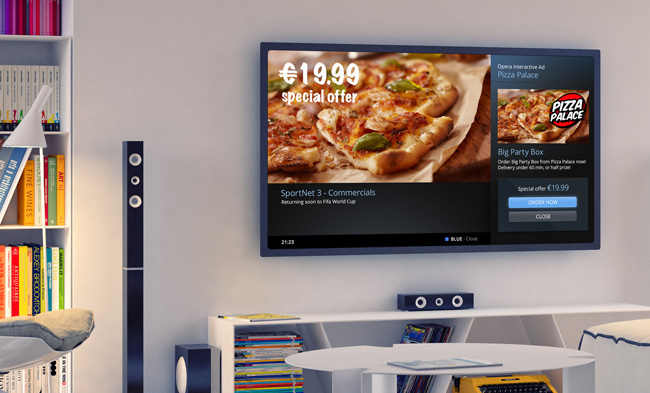Https://Noticviralweb.Blogspot.Com/2024/04/Marcas–Tv-2024.Html – A New Era For Brands!
In today’s digitally dominated world, it’s easy to assume that traditional TV advertising is on the decline. However, brands are continuously proving that television remains one of the most potent tools for creating emotional connections, building brand awareness, and driving consumer action. In 2024, brands are revitalizing TV as a medium by leveraging it in innovative and impactful ways. The content from “https://noticviralweb.blogspot.com/2024/04/marcas–tv-2024.html” dives deep into how these brands are evolving and staying relevant through storytelling, emotional engagement, and powerful visuals.
The Resilience of TV Advertising:

Despite the rise of digital marketing platforms such as social media, video streaming services, and online advertising, TV continues to command significant attention. Viewers, particularly in the U.S., still trust TV as a credible source of information and entertainment.
Why TV Advertising Still Matters:
- Wider Reach: TV has an unmatched ability to reach diverse audiences, spanning different demographics, age groups, and regions. While digital platforms target more niche markets, TV broadcasts a message to the masses.
- Building Emotional Connections: Television ads often tap into deeper emotions, telling stories that resonate with audiences on a personal level. This emotional engagement fosters brand loyalty and recall.
- Impression Longevity: TV commercials tend to create lasting impressions. The combination of visual storytelling, music, and message delivery lingers with audiences longer than digital ads that can be easily skipped or ignored.
How Brands Are Evolving Their TV Strategies in 2024?
1. Storytelling That Resonates
In 2024, brands are focusing more on storytelling rather than just showcasing products. Modern commercials feature narratives that align with societal values, such as sustainability, diversity, and mental health. This shift allows brands to foster a deeper connection with their audiences.
Example: A leading beverage company aired a commercial that featured a touching story about environmental conservation. Instead of just promoting the drink, the ad showed the company’s efforts toward reducing plastic waste, effectively resonating with environmentally conscious consumers.
Also Read: Spicyrranny – A Flavorful Exploration!
2. Creative Visuals and Cinematic Appeal
Gone are the days of straightforward product demonstrations. Today’s TV commercials are leveraging high-end production quality to create visually stunning ads that mirror the cinematic experience.
Example: Car manufacturers are creating mini-movies for TV commercials that combine sleek visuals with gripping narratives. These ads often resemble blockbuster films, making viewers feel emotionally invested in the story being told.
3. Interactive TV Ads

Brands are also experimenting with interactive elements in their ads, especially as smart TVs become more prevalent. Interactive ads allow viewers to engage directly with the commercial, whether it’s voting, answering a survey, or exploring additional product information through their remote controls.
4. Multi-Platform Integration
Successful brands in 2024 are using TV advertising as part of a larger, integrated marketing campaign that spans multiple platforms. Viewers might see an ad on TV, then be retargeted on social media or mobile apps with related content, creating a cohesive brand experience.
The Power of Values in Modern TV Commercials:
As society becomes more socially aware, brands are using TV ads to highlight their commitment to certain causes. Whether it’s promoting diversity, sustainability, or mental health, commercials in 2024 often reflect the values that brands want to be associated with.
- Diversity and Inclusion: Brands are focusing on creating commercials that represent a more inclusive and diverse world. From featuring underrepresented communities to emphasizing equality, these ads foster a sense of belonging.
- Sustainability: With growing concerns about climate change, brands are spotlighting their efforts toward sustainability. These commercials often highlight eco-friendly initiatives, from packaging to production processes, helping consumers feel better about their purchasing decisions.
- Mental Health: Several brands are also addressing mental health in their ads, helping to break the stigma around this critical issue. By promoting messages of self-care, emotional well-being, and empathy, these commercials resonate deeply with audiences.
How TV Ads Are Shaping Consumer Behavior?
TV commercials have the unique power to influence consumer behavior by triggering emotional responses, building trust, and shaping perceptions. In 2024, the role of TV advertising goes beyond merely driving sales; it’s about creating an emotional journey that consumers want to be a part of.
1. Influencing Buying Decisions
A well-crafted TV ad can make a lasting impact on buying decisions. By aligning their products with values and stories that matter to consumers, brands can inspire action long after the ad ends.
2. Building Trust Through Transparency

Many brands are using TV commercials as a platform to show transparency in their business practices. Whether it’s demonstrating how their products are made, where their materials are sourced, or what they stand for, transparency helps to build consumer trust.
3. Creating Brand Advocates
Brands that successfully create emotional connections through TV ads often see their consumers become brand advocates. These advocates don’t just buy the product; they promote it through word-of-mouth and social media, amplifying the ad’s impact.
Challenges and Opportunities in TV Advertising:
While TV advertising remains a powerful tool, it is not without its challenges. Brands must navigate the changing landscape and adapt to new technologies to stay relevant.
Challenges
- Fragmented Audiences: With the rise of streaming services, TV audiences are becoming more fragmented, making it harder to reach a large, unified audience.
- Ad Avoidance: Viewers are increasingly using ad-blocking technology or skipping commercials, which can reduce the effectiveness of TV ads.
Opportunities
- Cross-Platform Campaigns: By integrating TV with digital platforms, brands can create cohesive campaigns that reach audiences across multiple touchpoints.
- Interactive Ads: Interactive TV ads, which allow viewers to engage with the content, are becoming more popular and offer a new way to capture attention.
Also Read: Sifangds – A Comprehensive Overview!
The Future of TV Advertising: What to Expect
As technology continues to evolve, so will the future of TV advertising. We can expect brands to continue pushing the boundaries of creativity and interactivity, making the TV viewing experience even more immersive. With the integration of AI and data analytics, commercials will become increasingly personalized, targeting specific audiences with tailor-made content.
FAQ’s:
1. Why is TV advertising still relevant in 2024?
TV advertising remains relevant due to its broad reach, emotional impact, and the trust it builds with viewers, making it a key tool in brand strategies.
2. How are brands using AI in TV advertising?
Brands are using AI for scriptwriting, ad placement optimization, and data-driven insights, leading to more efficient and effective campaigns.
3. What are some challenges facing TV advertising today?
Challenges include fragmented audiences due to streaming services and the increasing use of ad-blocking technology by viewers.
4. Can TV ads be personalized?
Yes, TV ads can be personalized based on viewer data, such as location, interests, and past interactions with the brand.
5. How can brands integrate TV and digital advertising?
Brands can create cross-platform campaigns with a consistent message, using both TV and digital platforms to maximize reach and engagement.
6. What role does data play in TV advertising?
Data helps brands tailor their TV ads to specific audiences, making campaigns more targeted and effective.
7. Are interactive TV ads becoming more popular?
Yes, interactive TV ads that engage viewers are gaining popularity, offering a new way for brands to capture attention.
8. What is the future of TV advertising?
The future of TV advertising includes increased use of AI, more personalized content, and the integration of VR technology for immersive experiences.
9. How do brands measure the success of TV ads?
Brands measure success through metrics like brand awareness, sales lift, and viewer engagement, often using data analytics to track performance.
10. What opportunities exist for brands in TV advertising?
Opportunities include creating cross-platform campaigns, experimenting with interactive ads, and leveraging new technologies like AI and VR to enhance the viewer experience.
Conclusion:
In 2024, TV advertising remains a formidable force in the world of marketing. While digital platforms have their own strengths, TV’s ability to create emotional connections, build trust, and influence consumer behavior is unparalleled. Brands that embrace innovative storytelling, values-driven content, and high-quality production are thriving in this space, demonstrating that television is far from a fading medium—it’s evolving in powerful and exciting ways.
Read More:














Post Comment